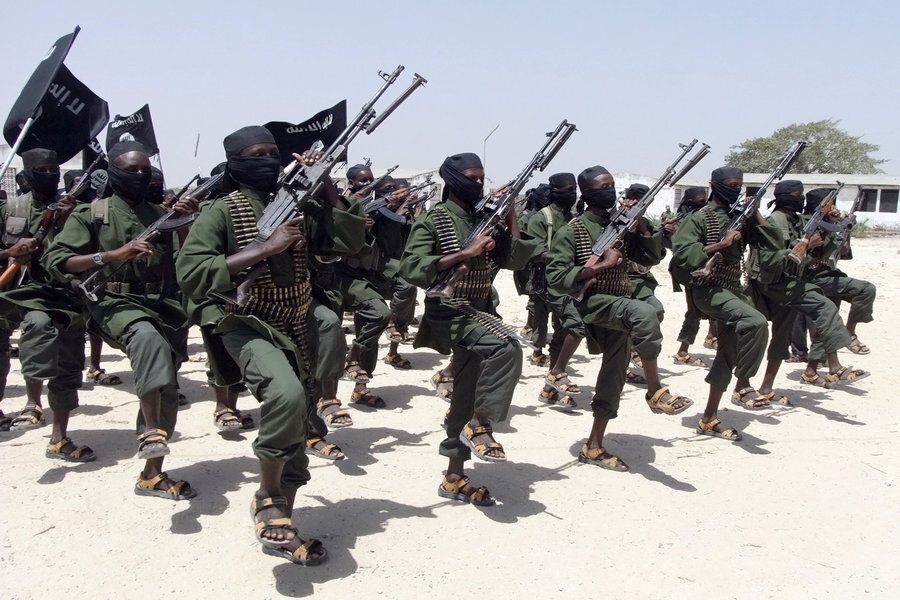US airstrike targets Al Shabab leader in Somalia
Loading...
US forces launched an airstrike against a "senior leader" of Al Shabab in Somalia late Monday, days after the militant group attacked the main African Union military base in Mogadishu where diplomats were holding a Christmas party, according to Pentagon officials.
The strike was the latest in a series of US military support activities in the Horn of Africa to help stabilize Somalia and curb insurgent groups like Al Shabab, which is linked to Al Qaeda and at one point controlled much of the southern tier of Somalia. Al Shabab has carried out cross-border attacks in Uganda and Kenya, including the bloody Westgate Mall attack in Nairobi 15 months ago.
In September, the US military killed Al Shabab’s leader, Ahmed Abdi Godane, in an airstrike. Last week, Al Shabab senior leader Zakariya Ismail Hersi, who had a $3 million State Department bounty on him, surrendered to Somali defense forces. Mr. Hersi is thought to be Al Shabab’s intelligence and security coordinator.
Whether Monday's strike was successful and how the US military conducted the operation remain unclear.
"The strike took place in the vicinity of Saakow, Somalia," Pentagon spokesman Mark Wright said in a statement carried by Reuters. "At this time, we do not assess there to be any civilian or bystander casualties. We are assessing the results of the operation and will provide additional information, when appropriate, as details become available."
“We think the targeting was done precisely and accurately.” a senior US Defense Department official told the Washington Post on condition of anonymity.
Al Shabab’s Christmas Day attack on the AU base in Mogadishu – where Western embassies and UN offices are housed – left nine people dead, including three soldiers. An Al Shabab spokesman claimed later to be targeting a party where international diplomats and officials were present, and said the operation was in response to the September killing of Mr. Godane. Other reports said the militants infiltrated the AU base in Mogadishu using insurgents dressed as regular AU troops.
The attacks by the U.S. follow a series of military setbacks that al-Shabaab has suffered since African Union-backed Somali government troops forced the militants to withdraw from Mogadishu in August 2011. Since then, the army has forced the insurgents to relinquish control of about 70 percent of southern and central Somalia, according to the presidency.
In its coverage of the Al Shabab attack on Dec. 25, The New York Times noted Al Shabab's ongoing ability to execute attacks in the Somali capital:
This is not the first time al-Shabab has attacked the African Union. In 2011 al-Shabab gunmen disguised as soldiers attacked an African Union base in Mogadishu sparking a two-hour gunfight that left at least ten people dead. Earlier this month, a suicide bomber rammed his vehicle into a U.N. convoy near Mogadishu's airport, killing three people just after Somalia's president entered the protected airport area. No U.N. staff were killed or injured, said the U.N.
The attacks underscore the militants' ability to carry out complex and deadly operations frequently even after AU troops forced them from strongholds.
In neighboring Kenya, the Al Shabab threat has become a rallying cry for the government to conduct a high-profile war on terrorism that has involved crackdowns on Nairobi neighborhoods and in the coastal city of Mombasa, according to special reports by The Christian Science Monitor. Critics have said that President Uhuru Kenyatta's government is exercising too heavy a hand, running the risk of alienating populations with indiscriminate arrests and violence and potentially laying the groundwork for a backlash.





